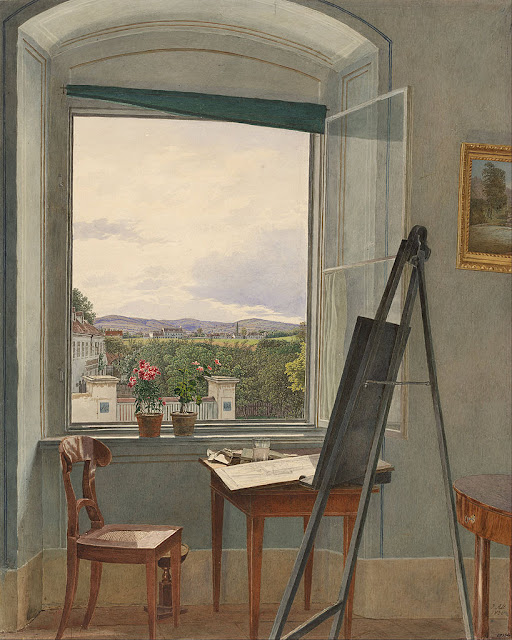 |
| Jean-François Thomas de Thomon Architectural composition - Interior of Egyptian Temple 1803 watercolor, gouache Hermitage, Saint Petersburg |
"The manufacture of time by a press agency is by no means simple, the current events industries' information not being satisfied with recording 'what happens', since then everything that 'happens' would have to be recorded, but 'what happens' only happens in not being 'everything', in being differentiated from everything. Information only has value as the result of a hierarchization of 'what happens': in selecting what merits the name of 'event', these industries co-produce, at the very least, access to 'what happens' through giving it the status of event. Nothing 'takes place' or 'happens' except what is 'covered'. Thousands of (potential) events, at a minimum, happen without happening, take place without taking place, or take place without happening – and thus will not have taken place, will not have happened – but rather will go to their anonymous and improbable destinations."
– Bernard Stiegler, from The Industrialization of Memory, translated by Stephen Barker in Technics and Time, 2: Disorientation (Stanford University Press, 2009)
 |
| Hilaire Thierry Salon in Empire taste ca. 1820 watercolor Cooper Hewitt, Smithsonian Design Museum |
 |
| Eugène Delacroix Fireplace ca. 1824 watercolor Philadelphia Museum of Art |
 |
| John Sell Cotman Errand-boy asleep in a church ca. 1825 watercolor Yale Center for British Art |
 |
| Anonymous artist Painter's Studio 1820s watercolor, gouache Cooper Hewitt, Smithsonian Design Museum |
 |
| Joseph-Eugène Lacroix A Studio in the Villa Medici, Rome 1835 watercolor Cooper Hewitt, Smithsonian Design Museum |
 |
| Jakob Alt View from the Artist's Studio in Alservorstadt toward Dornbach 1836 watercolor Albertina, Vienna |
"It may indeed be questioned whether we have any memories at all from our childhood: memories relating to our childhood may be all that we possess. Our childhood memories show us our earliest years not as they were but as they appeared at the later periods when the memories were aroused. In these periods of arousal, the childhood memories did not, as people are accustomed to say, emerge, they were formed at that time. And a number of motives, with no concern for historical accuracy, had a part in forming them, as well as in the selection of the memories themselves."
– Sigmund Freud, from Screen Memories (1899) in The Standard Edition of the Complete Psychological Works of Sigmund Freud, vol. 3, translated by James and Alix Strachey and published by the Hogarth Press (1948)
 |
| Anonymous artist Interior of a Library ca. 1830-50 watercolor Cooper Hewitt, Smithsonian Design Museum |
 |
| Eduard Gaertner Concert-room of Sans Souci Palace, Potsdam 1852 watercolor, gouache Cooper Hewitt, Smithsonian Design Museum |
 |
| Romolo Liverani Stage-set design for Il Trovatore ca. 1853 watercolor Morgan Library, New York |
 |
| Félix Duban Architectural fantasy in the style of Pompeii 1856 watercolor Musée d'Orsay, Paris |
 |
| Karl Wilhelm Streckfuss Artist's Studio in Berlin 1860s watercolor Cooper Hewitt, Smithsonian Design Museum |
 |
| Adolph Menzel Choirstalls in Mainz Cathedral 1869 watercolor, gouache Metropolitan Museum of Art, New York |
 |
| John Singer Sargent Tiepolo ceiling, Milan ca. 1898-1900 watercolor Metropolitan Museum of Art, New York |